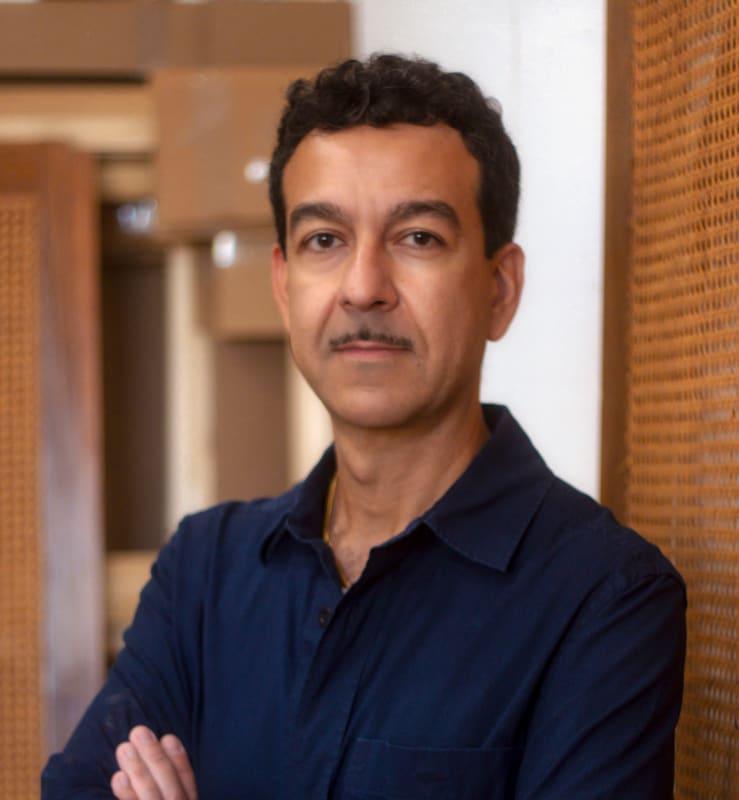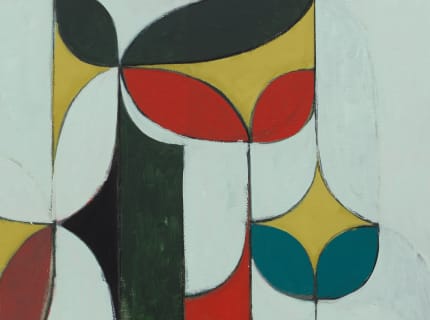Alexander Gray Associates announced representation of Kamrooz Aram (b. 1978). Aram has built his practice on dismantling the divide between ornament and fine art, renegotiating the art historical hierarchies that privilege Western forms of abstraction above others. His paintings and sculptures do not simply cross categories; they probe the structures that enforce them. Born in Shiraz, Iran, Aram emigrated to the United States in the 1980s, where he found himself forced to come to terms with a multitude of identities imposed upon him. These experiences left a lasting mark. Categories, he discovered, do not merely describe identity—they invent it. This recognition drives his work, which asserts that non-Western ornamental traditions carry the same intellectual weight and conceptual rigor Western art history has long reserved for itself.
Aram’s paintings are acts of translation. Intricate geometries slip into fields of color, while brushstrokes accumulate in thin layers, revealing glimpses of what lies beneath. Aram speaks of pursuing contemporary art’s “taboo subjects” like emotion and spiritual presence, and in his work, they appear not as sentiment, but as structure. Calligraphic forms reverberate against the cool authority of Minimalist grids; floral arabesque patterns breathe new life into Color Field painting. These juxtapositions are not acts of fusion, so much as acts of recognition, acknowledging what has always been visible.
Aram’s influences are as diverse as his artistic strategies. Henri Matisse’s embrace of pattern, Ellsworth Kelly’s geometric clarity, and Cy Twombly’s gestural abandon all resonate in his practice. Most revealing is Le Corbusier—modernism’s supposed ascetic—whose architecture, despite its rhetoric of purity, cannot entirely suppress its embrace of ornament. For Aram, this contradiction lays bare how words like “decorative” are never neutral; they are instruments of hierarchy.
Aram’s sculptures extend this critique into three dimensions, arranging ceramic objects on painted plinths that echo museum displays. These installations engage with institutions from within, showing how context confers the status of “art” and revealing the fragile systems behind such designations. As Aram explains, “I hope to renegotiate the terms in which art history has been written—the Eurocentric hierarchy that places certain types of painting in the category of fine art while others are relegated to the minor arts.”
At the center of Aram’s practice lies a paradox he captures with poetic clarity in his writing: “It occurs to me that I am Arabesque. It occurs to me that there is no such thing as the Arabesque.” His work inhabits the charged space between being and non-being, tradition and invention, visibility and erasure. Rather than resolving these contradictions, Aram leaves them; it is in their friction—in the failure of old certainties—that new ways of seeing begin to emerge.
Aram’s work has been the subject of numerous solo exhibitions, including Kamrooz Aram: Privacy, An Exhibition, The Arts Club of Chicago, IL (2022); Lives of Forms: Kamrooz Aram and Iman Issa at Z33 House for Contemporary Art, Design & Architecture, Hasselt, Belgium (2021); FOCUS: Kamrooz Aram, Modern Art Museum of Fort Worth, TX (2018); Kamrooz Aram: Ancient Blue Ornament, Atlanta Contemporary, GA (2018); and Kamrooz Aram: Ornament for Indifferent Architecture, Museum Dhondt Dhaenens, Sint-Martens-Latem, Belgium (2017). His work has been featured in significant group exhibitions, including Paraventi: Folding Screens from the 17th to 21st Centuries at Fondazione Prada, Milan, Italy (2023-2024) and Desorientalismos at Centro Andaluz de Arte Contemporáneo, Seville, Spain (2020)Aram's work is in the collections of The Metropolitan Museum of Art, New York, NY; M+ Museum, Hong Kong, China; Art Gallery of New South Wales, Sydney, Australia; Modern Art Museum of Fort Worth, TX; Cincinnati Art Museum, OH; Portland Museum of Art, ME; and Sharjah Art Foundation, United Arab Emirates, among others. He is the recipient of multiple prestigious awards, including the Guggenheim Fellowship (2025); the Carla Fendi Rome Prize from the American Academy in Rome (2024); and the Abraaj Group Art Prize (2014). He is also represented by Green Art Gallery, Dubai, United Arab Emirates. Aram lives and works in Brooklyn, NY.

